Invented by Daniel S. Kohane, Rong Yang, Lily Yun Lin, Childrens Medical Center Corp, Massachusetts Institute of Technology
Drug delivery systems have evolved significantly over the years, with a focus on improving the efficiency and effectiveness of drug administration. One of the key challenges in drug delivery is the limited permeability of biological barriers, such as the skin, mucous membranes, and gastrointestinal tract. These barriers can hinder the absorption of drugs, leading to suboptimal therapeutic outcomes.
Permeation enhancement agents are substances that can overcome these barriers and enhance drug permeation. They work by altering the physicochemical properties of the drug or the barrier itself, thereby facilitating drug absorption. These agents can be classified into various categories, including chemical enhancers, physical enhancers, and biological enhancers.
Chemical enhancers are the most commonly used permeation enhancement agents. They are typically small molecules that can interact with the barrier and modify its structure, allowing for increased drug permeation. Examples of chemical enhancers include surfactants, fatty acids, and penetration enhancers like dimethyl sulfoxide (DMSO) and ethanol.
Physical enhancers, on the other hand, utilize physical methods to enhance drug permeation. These methods include the application of heat, ultrasound, iontophoresis, and microneedles. Physical enhancers can disrupt the barrier structure, increase the fluidity of the membrane, and create temporary pathways for drug molecules to pass through.
Biological enhancers, also known as carrier systems, involve the use of carrier molecules or nanoparticles to improve drug delivery. These carriers can encapsulate the drug and protect it from degradation, facilitate its transport across the barrier, and release it at the desired site of action. Liposomes, polymeric nanoparticles, and dendrimers are examples of biological enhancers used for drug delivery.
The market for compositions with permeation enhancement agents is driven by several factors. Firstly, the increasing prevalence of chronic diseases and the growing demand for effective treatment options have fueled the need for improved drug delivery systems. Permeation enhancement agents offer a promising solution to enhance the therapeutic efficacy of drugs and improve patient outcomes.
Additionally, the rising adoption of transdermal drug delivery systems has contributed to the market growth. Transdermal patches are convenient and non-invasive, making them an attractive option for patients. Permeation enhancement agents play a crucial role in enhancing drug permeation through the skin, enabling the effective delivery of drugs through this route.
Furthermore, advancements in technology and research have led to the development of novel permeation enhancement agents with improved safety and efficacy profiles. These agents are designed to overcome the limitations of traditional enhancers, such as skin irritation or systemic toxicity, and offer enhanced drug delivery capabilities.
However, the market for compositions with permeation enhancement agents is not without challenges. The regulatory landscape surrounding these agents can be complex, as ensuring their safety and efficacy is of utmost importance. Additionally, the high development and manufacturing costs associated with these agents can hinder their widespread adoption.
In conclusion, the market for compositions with permeation enhancement agents for drug delivery is witnessing significant growth due to the increasing demand for effective drug delivery systems. These agents offer a promising solution to overcome biological barriers and enhance drug absorption. With advancements in technology and research, the market is expected to witness further growth, providing opportunities for pharmaceutical companies and researchers to develop innovative drug delivery systems.
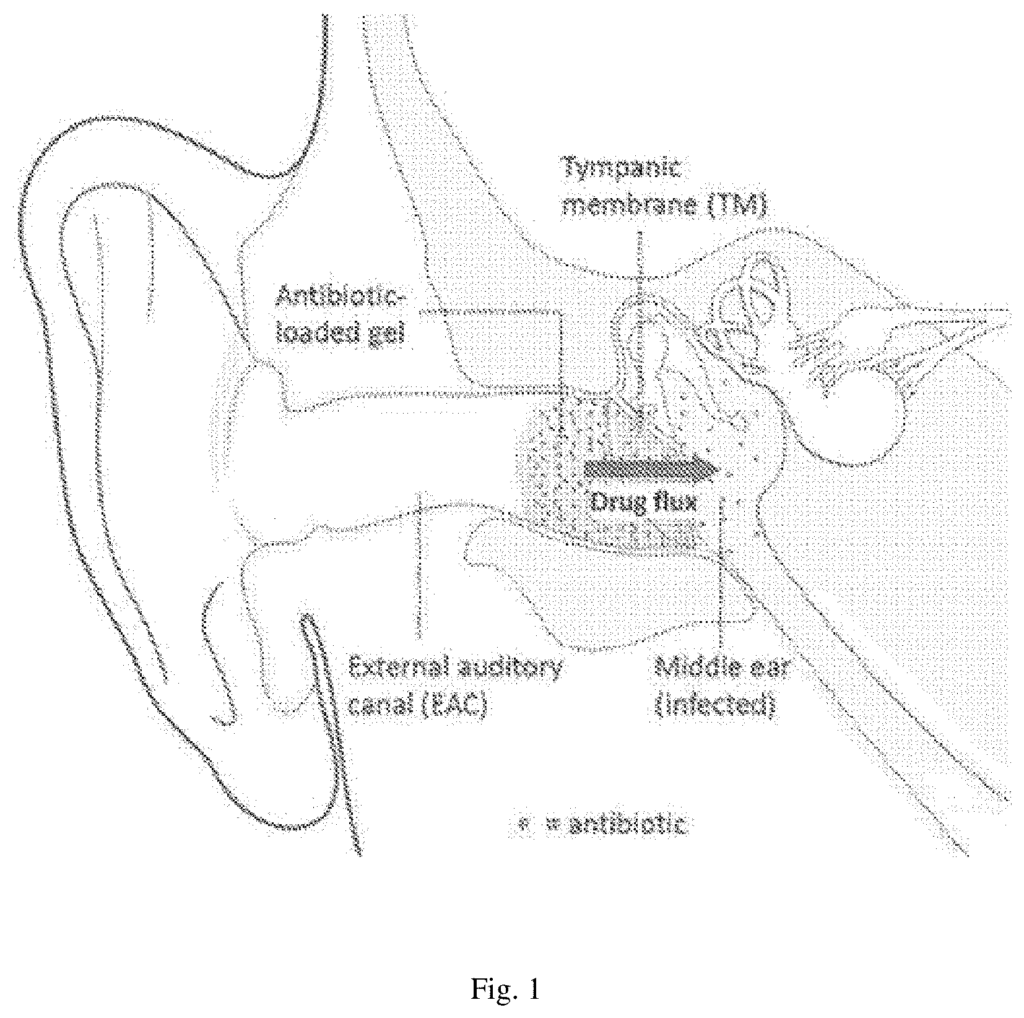
The Childrens Medical Center Corp, Massachusetts Institute of Technology invention works as follows
The present invention consists of compositions and methods to deliver therapeutic agents across a barrier. The compositions contain a therapeutic (e.g. an antimicrobial, antibiotic or anesthetic), a permeation improver that increases the flux across the barrier and a matrix-forming agent. The matrix forming agents forms gels at suitable gelation temperatures and rheological characteristics for drug delivery. In some cases, these properties do not differ significantly from the composition without permeation enhancer. The invention also includes a matrix-forming agent and compositions therefrom. These compositions are especially useful for the treatment of otitis. “The compositions described in this patent are also provided with methods of treatment, delivery methods, and kits.
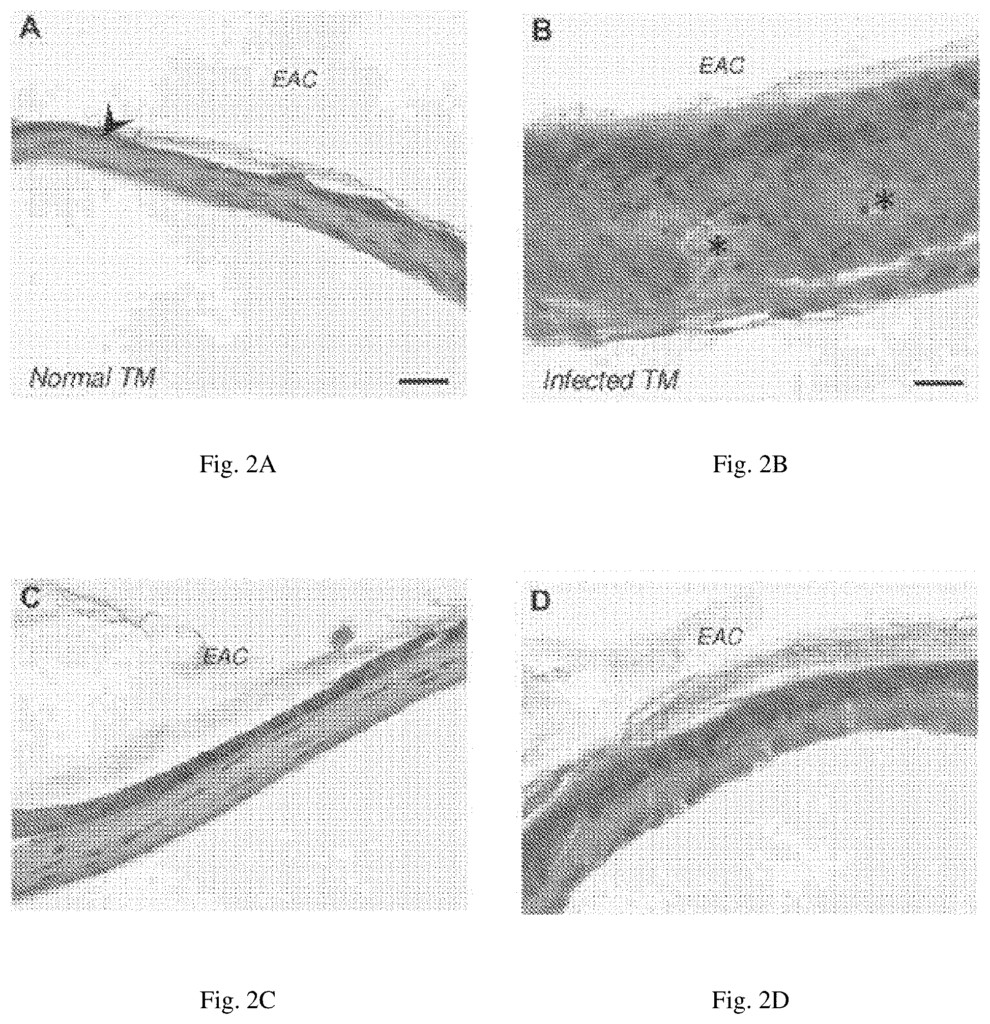
Background for Compositions with permeation enhancement agents for drug delivery
Matrix Forming Agents
Polymers containing polyphosphoester monomers or blocks
R1
R3
Synthesis and Block Copolymer of Polyphosphoester
Permeation Enhancers
Therapeutic Agents
Other Additives
Polysaccharide Matrix Formulating Agents
Matrix-forming agents (and compositions thereof)
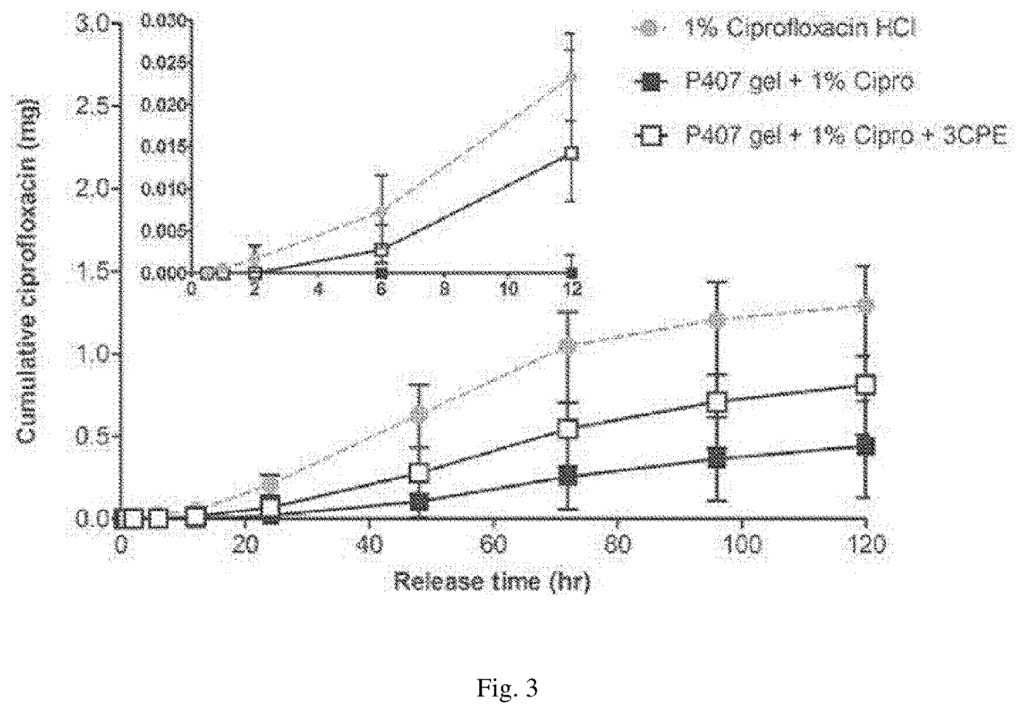
Methods and Uses for Treatment
Kits
Definitions
Chemistry Definitions
Other Definitions
EXAMPLES
Materials & Methods
Isolation and Intact ChinchillaTMs.
Trans-Tympanic delivery of antibiotics.
CPEs enhance drug flux across the IntactTM.
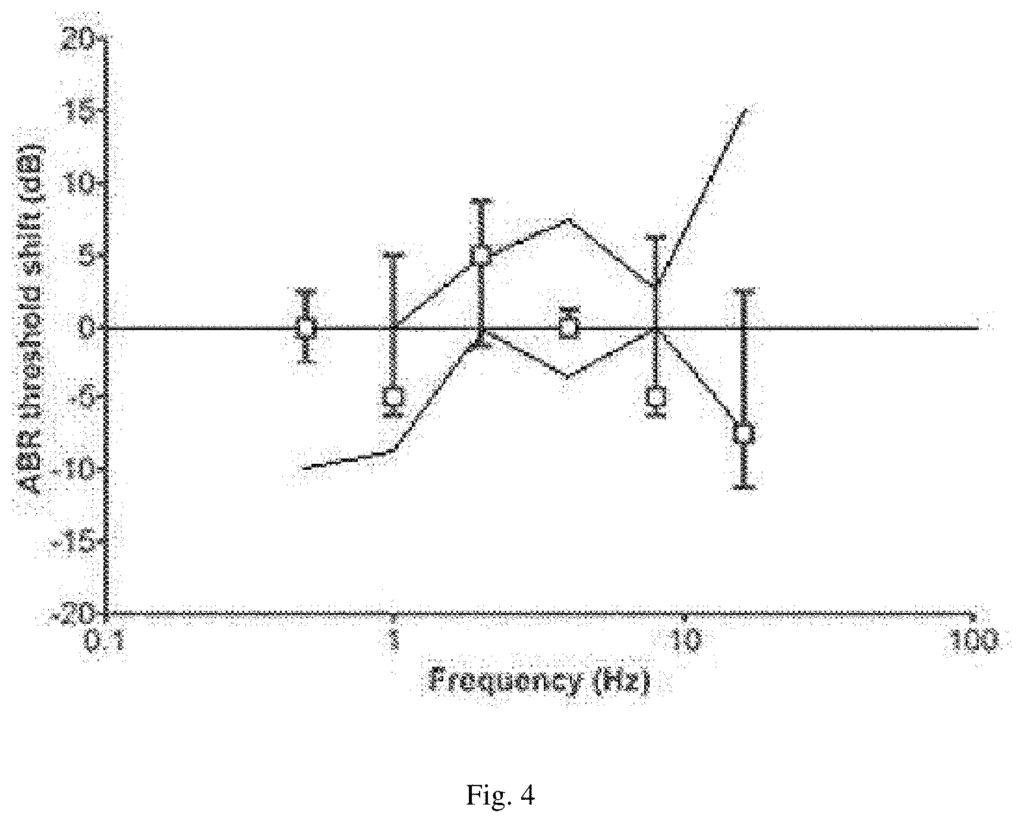
Hydrogels in the TM.
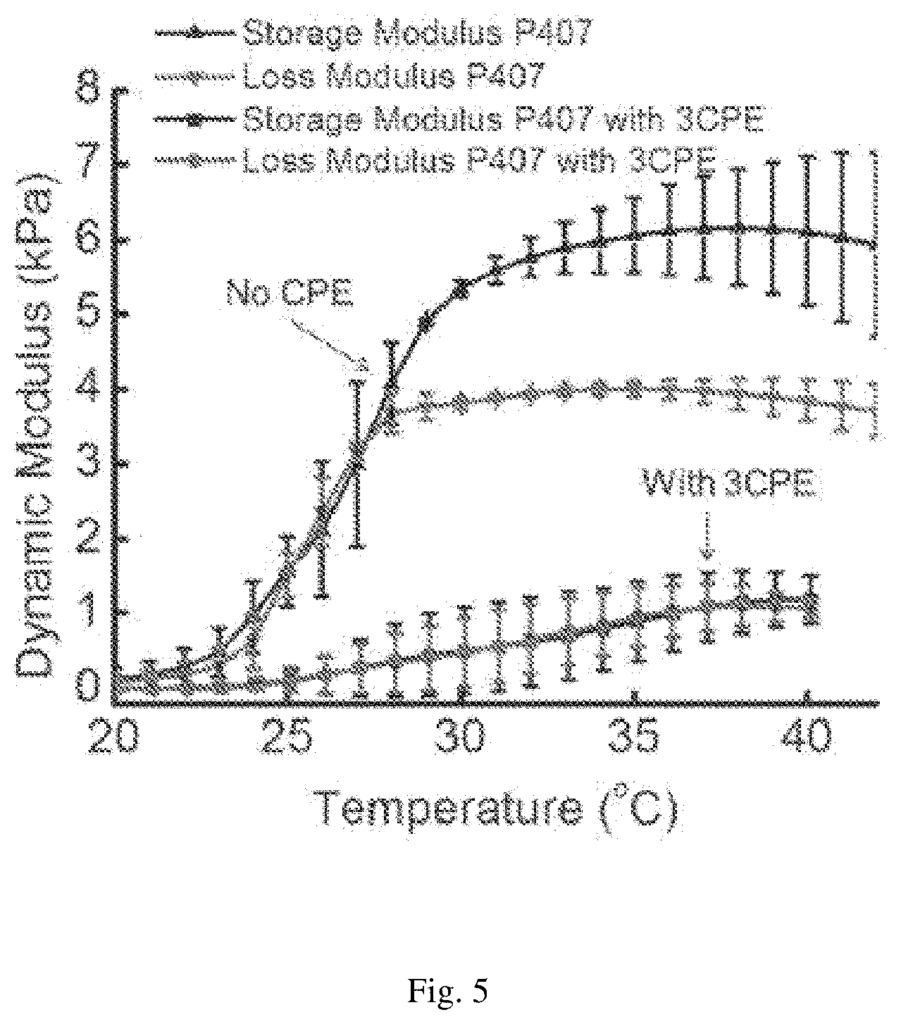
Click here to view the patent on Google Patents.
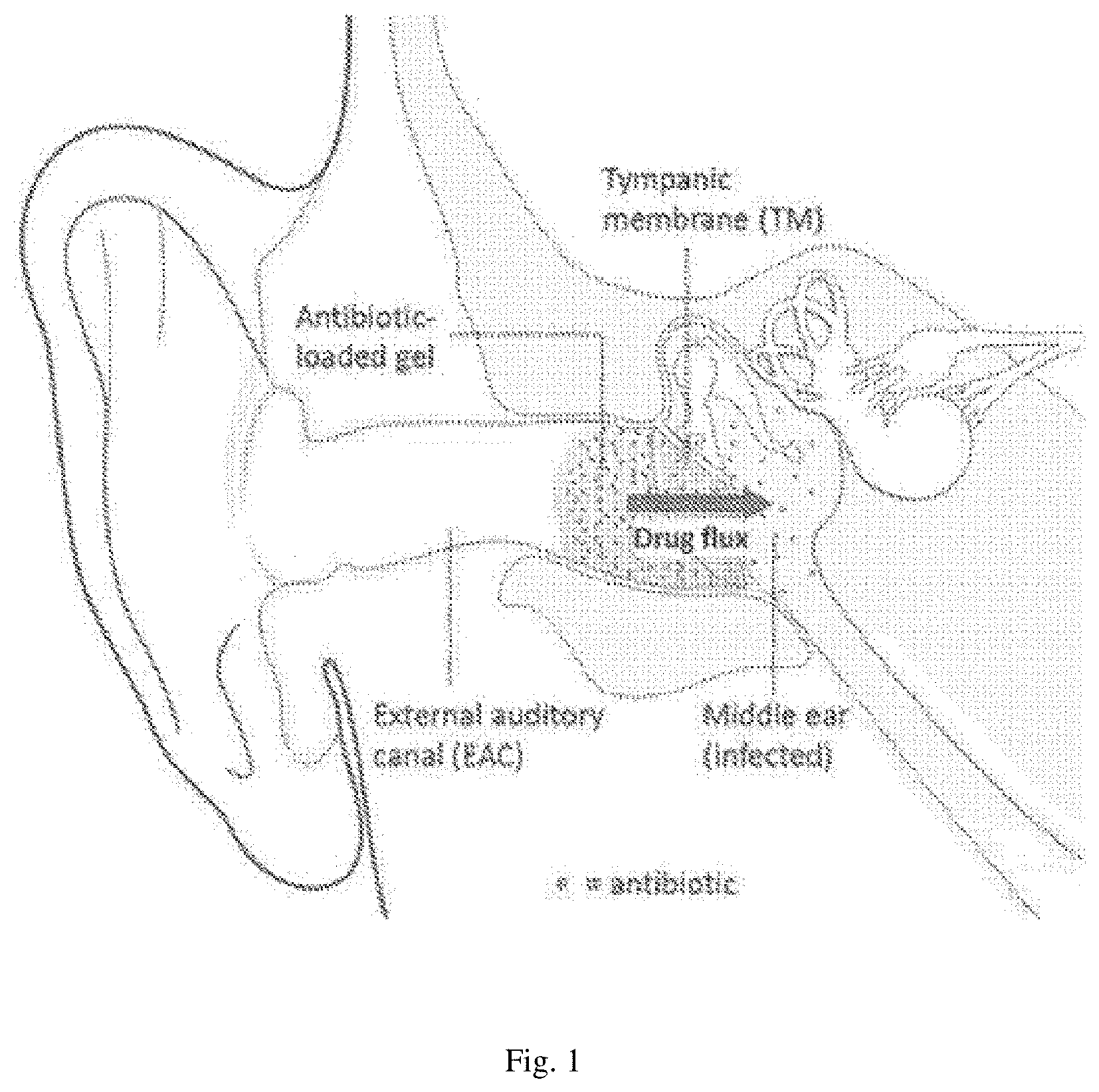
Leave a Reply